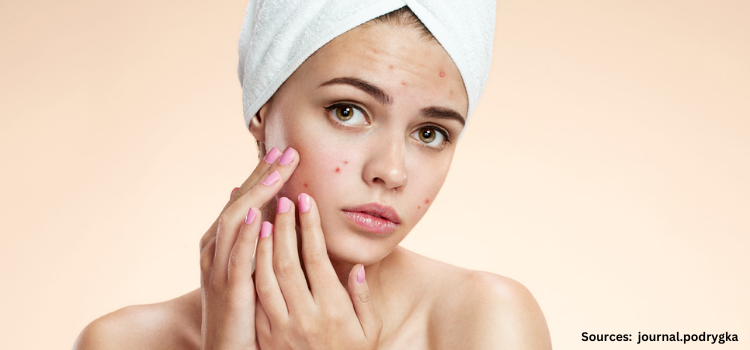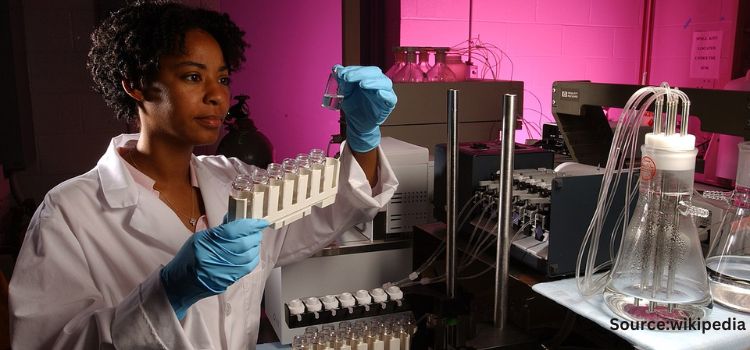From Breakouts to Breakthroughs: The Future of Acne Treatment
17-Feb-2025

Introduction
Acne, a universal skin concern, often seems like an unwelcome guest that lingers far too long. But here's the good news: the battle against blemishes has entered an era of unprecedented innovation. Technology is now a significant aid in the ongoing pursuit of achieving clearer and healthier skin. From futuristic devices that harness the power of light to intelligent apps that guide personalized skincare routines, the procedures to combat acne have never been more sophisticated and accessible. This article delves into the realm of cutting-edge technologies designed to conquer acne problems. Regardless of age or familiarity with skincare, anyone seeking a smoother path to a blemish-free complexion will embark on an exciting journey through the latest and user-friendly solutions that promise to transform how we treat and manage acne.
Discover some of the most recent breakthroughs that are driving the future of professional acne treatment.
1. Artificial Intelligence Algorithm for Acne Grading
The development and accuracy of an artificial intelligence (AI) algorithm for acne grading from smartphone photographs is a remarkable advancement in skincare. This innovation offers a user-friendly solution for individuals dealing with acne issues. By simply taking a photo with their smartphone, they can receive a precise evaluation of their skin's condition, eliminating the need for subjective judgments. The accuracy of AI in grading acne marks a significant step forward, enhancing the reliability of acne diagnosis.
This advancement not only increases accessibility to professional evaluations but also opens the door to more personalized and effective acne treatments. This is expected to transform the landscape of acne management for everyone. This technology is closely intertwined with the growth of the professional acne medication industry, ultimately contributing to its expansion as it addresses the diverse and evolving demands of acne sufferers.
For instance, Legit.Health introduced a groundbreaking algorithm ALADIN (Automatic Lesion and Density Index) for next-generation doctors. This tool makes grading acne by counting the number and density of lesions a task that requires mere seconds. By employing computer vision technology, ALADIN can accurately tally the number of blemishes in a smartphone-captured image. Moreover, it considers the density of these lesions while determining the severity of acne and then translates it into an easily interpretable outcome measure validated by experts in the field.
2. Tiny Nanocarriers for Acne Management
Recent advancements in acne management from researchers from the University of South Australia in collaboration with the University of Adelaide and the University of Aix-Marseille in France led to an exciting breakthrough. In September 2023, they introduced a novel approach to acne treatment using tiny and soft nanoparticles, which are nearly 1,000 times smaller in size as compared to a single strand of human hair, to deliver an antibiotic compound called Narasin. The researchers have achieved an extraordinary achievement by encapsulating Narasin within these tiny structures known as nanomicelles and formulating it into a gel.
Abid's supervisor and pharmaceutical scientist, Professor Sanjay Garg, highlights the urgent requirement for developing new antibacterial therapies. This necessity arises due to increasing antibiotic resistance and the limitations of many current topical treatments in penetrating hair follicles at acne sites. It also underscores the need for effective and safe alternatives.
The substantial increase in solubility, surpassing 100-fold improvement, signifies a promising path forward. This novel technique not only overcomes the limitations of oral medications, notorious for their side effects but also paves the way for more efficient and localized acne management. With the potential to combat drug-resistant acne bacteria and achieve an extraordinary 100-fold boost in absorption compared to traditional water-based methods, this underexplored development holds the key to transforming the treatment landscape for acne.
Furthermore, it ushers in a future of more effective and patient-friendly solutions. As awareness of these groundbreaking developments spreads and they gain validation through further research and clinical trials, the professional acne medication market is expected to experience a significant shift.
3. Chemical Peels to Combat Acne Scars
The integration of chemical peels to combat acne scars represents a promising advancement in recent trends of acne medication. These peels, consisting of various chemical solutions, are applied to the skin to exfoliate its top layers and stimulate collagen production, ultimately reducing the appearance of acne scars. This innovative approach is gaining popularity as it offers a non-invasive option for individuals looking to address the aftermath of acne breakouts. By promoting the shedding of damaged skin cells and stimulating the growth of fresh and healthier tissue, chemical peels are vital in improving skin texture and tone, leading to a more radiant complexion.
During his presentation at the 2022 American Academy of Dermatology Annual Meeting, Dr. Harold Brody, a Clinical Professor of Dermatology at Emory University School of Medicine in Atlanta, Georgia, and the Former President of the International Peeling Society (IPS), the U.S., emphasized a noteworthy perspective. He highlighted that chemical peels, as a treatment option for acne scars, can be a cost-effective alternative to laser treatments. Dr. Brody pointed out that chemical peels can yield results that are on par with those achieved through laser procedures when performed by a skilled dermatologist. This insight holds significance for patients seeking acne scar treatments, especially while considering cost. Recent statistics from 2020, as reported by the American Society of Plastic Surgeons, indicated that the average price of chemical peels was USD 519, in contrast to the higher costs of USD 1,445 for non-ablative lasers and USD 2,509 for ablative lasers.
The incorporation of chemical peels into acne scar treatment is a noteworthy development that holds great potential for those seeking effective and accessible solutions to regain their confidence with clear skin. By harnessing chemical peels as part of their treatment options, skincare professionals can provide more comprehensive and effective services, catering to the needs of clients looking to achieve smoother and scar-free skin with the assurance of professional expertise.
4. Virtual Designers and Chatbots for Acne Treatment
The emergence of virtual designers and chatbots in acne medication aligns with a notable trend in the professional acne medication market. These digital innovations are revolutionizing how individuals access information and personalized advice for managing acne-related concerns. In the professional context, virtual designers can assist dermatologists and skincare experts in crafting tailored treatment plans for their patients recommending specific skincare regimens and products. Simultaneously, chatbots serve as a valuable round-the-clock resource for patients seeking immediate answers to questions related to acne treatment and prevention.
This integration of technology not only streamlines the communication between professionals and patients but also ensures that individuals receive timely and expert guidance. In the ever-advancing world of professional acne medication, the incorporation of virtual designers and chatbots promises to elevate user experiences, drive treatment outcomes, and contribute to the continual evolution of acne management strategies, ultimately benefitting healthcare providers and patients.
Shanghai Jahwa, a long-standing household and personal care company in China, took a notable step in April 2023. It introduced a pioneering social organization standard in collaboration with the Shanghai Daily Chemistry Trade Association and a team of experts from various fields. This groundbreaking standard focuses on using artificial intelligence (AI) for skin testing data analysis. It is the first of its kind in China. It encompasses eight key skin parameters, including wrinkles, acne, complexion, pores, eye bags, dark circles, skin type, and sensitivity. This standard is a significant advancement in the field of skincare and promises to bring valuable insights to the industry.
Conclusion
These groundbreaking advancements are set to transform the landscape of skincare, offering innovative solutions to address the diverse and evolving needs of individuals dealing with acne-related concerns. As these advancements gain validation through further research and clinical trials, the professional acne medication market is on the cusp of a significant transformation. The potential for more effective & patient-friendly solutions and the promise of improved treatment outcomes will undoubtedly shape the future of acne management for the better.
These innovations benefit patients seeking clearer skin and provide valuable tools for healthcare providers to deliver more comprehensive and tailored services. In a world of ever-advancing technology, the incorporation of these breakthroughs promises to elevate user experiences, drive treatment outcomes, and contribute to the continual evolution of acne management strategies.
About the Author
 Sunanda Ghosh is a researcher with more than 3 years of experience. She has a passion for understanding consumer behavior and market trends, and uses her skills in innovative ways to gather and analyze data. Throughout her career, she has worked with a diverse range of global clients across various industries including technology, semiconductor, and energy. She is dedicated to providing valuable insights that can help shape a company's direction and drive success. The author can be reached at info@nextmsc.com
Sunanda Ghosh is a researcher with more than 3 years of experience. She has a passion for understanding consumer behavior and market trends, and uses her skills in innovative ways to gather and analyze data. Throughout her career, she has worked with a diverse range of global clients across various industries including technology, semiconductor, and energy. She is dedicated to providing valuable insights that can help shape a company's direction and drive success. The author can be reached at info@nextmsc.com









